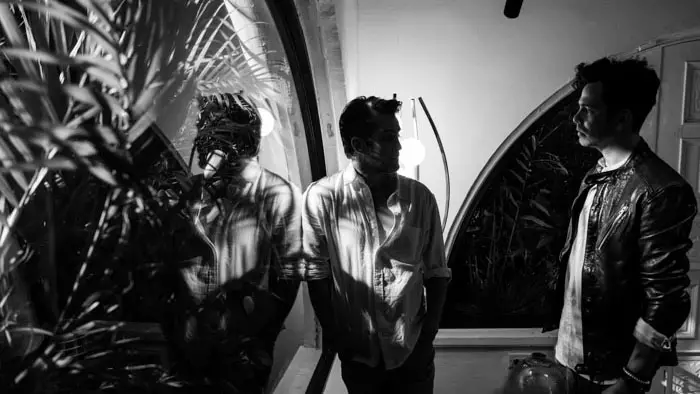David, a middle-aged painter living in a secluded but beautiful shoreline house in the Florida Keys, breaks his willful isolation to do a portrait of a very special guest: young, edgy, and openly gay Justin; but the date takes an unexpected turn when Justin discovers that David is living a past that he believes he cannot repair. David must do everything in his power to keep control of the situation.
I chatted with directors Carlos Betancourt and Oscar Ernesto Ortega about their film, Borrowed. We discuss the challenges and secrets behind creating an independent thriller, including character development and the process of building tension.
What was the seed behind the basic plot of Borrowed?
Carlos Rafael Betancourt: Borrowed is an adaptation of a theater play by Jim Kierstead. Combining his skills in theater and therapy, Jim decided to write the play as a two-hander and dig deep into the backstory and trauma of both the captor, David, and the victim, Justin. Justin seeks to outsmart David and escape his forced captivity as David tries to win him back and justify his terrible actions. In adapting the story to the screen, we embraced the idea of exploring both characters in all their complexity, keeping the seed of the play while bringing a cinematic structure and execution.

“…we embraced the idea of exploring both characters in all their complexity…”
Oscar Ernesto Ortega: Situations, where parents try to replace the loss of a child, has been seen in all kinds of films—even Pinocchio—and it is not hard to connect emotionally with the parent’s victim for the absence of the child. But in this case, our challenge was that we were working with a love story that quickly turned to violence. David is a traumatized father trying to find his son physically and spiritually. As a result of that trauma, he commits terrible actions, but thanks to meeting Justin, he manages to find a moment of lucidity and make the decision he should have made years ago.
Can you talk about developing the thriller aspect of the story?
Oscar: The thriller aspect was in the nature of the story, and we just tried to enhance and balance it with drama and romance. We knew that these genres had to intertwine organically throughout the film. So we made sure not to use thriller elements as a commercial tool but for dramatic purposes to support the truth of the story we were facing.
Carlos: The original play was charged with dramatic tension, and the adaptation to the film called for a psychological thriller. As Oscar mentioned, we wanted to keep the gripping truth of the story but not lean gratuitously on thriller aspects for plot purposes. Our audience should expect to go on a journey of character exploration while staying at the edge of their seat, not an empty spectacle out of thriller and violence.


